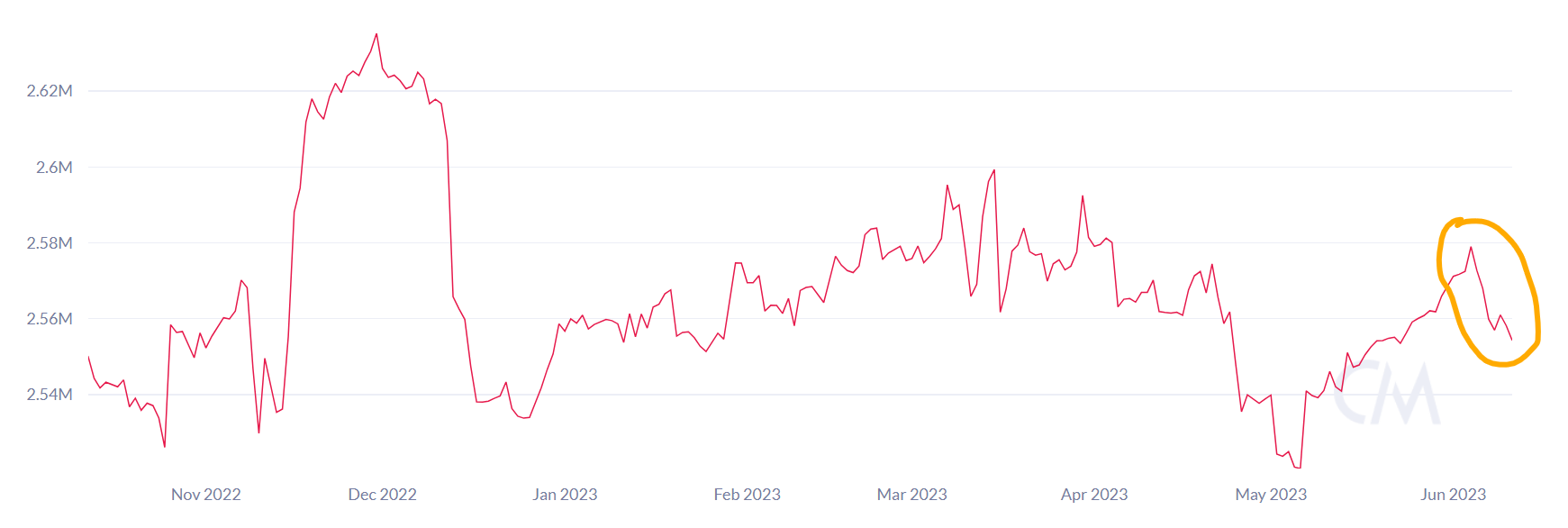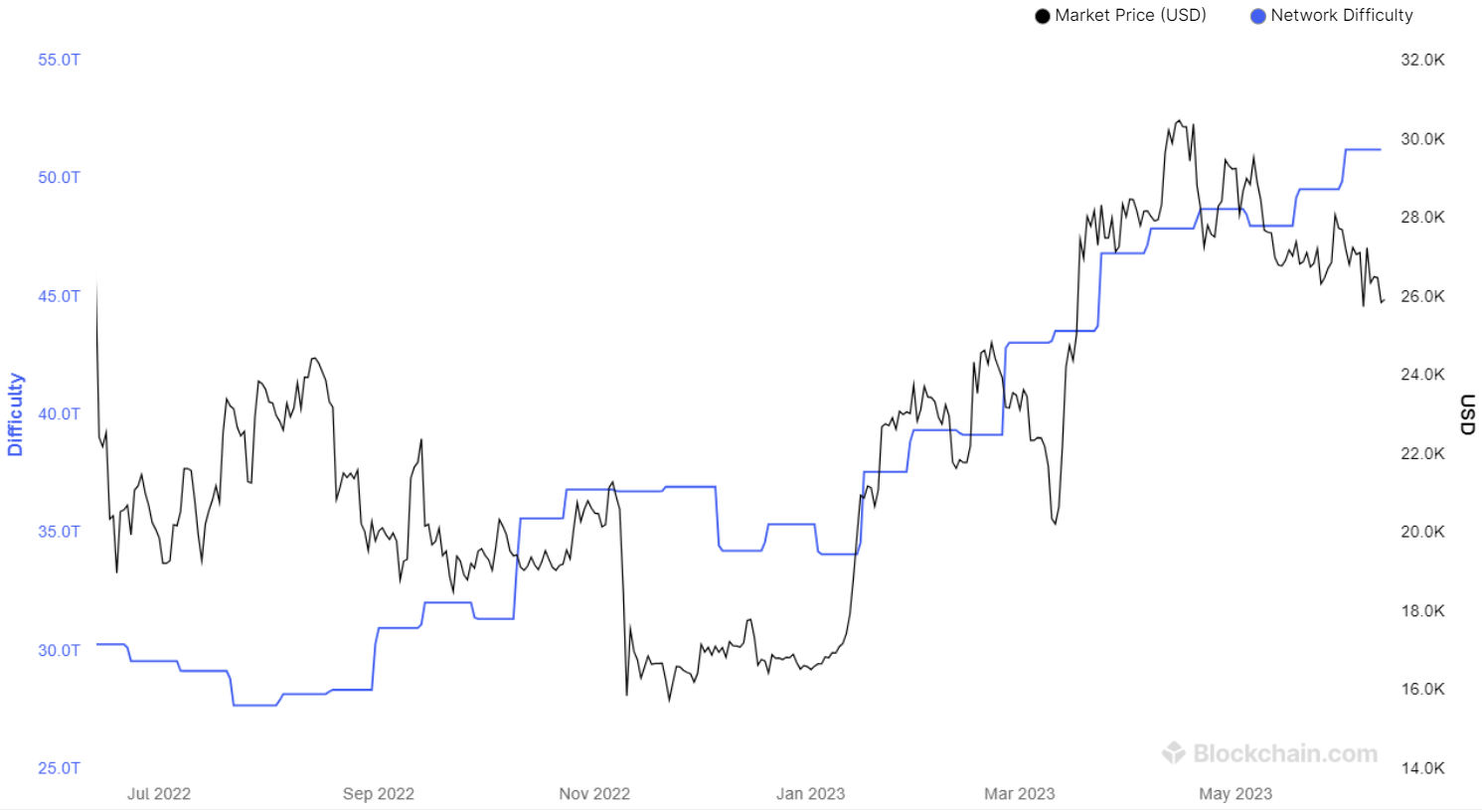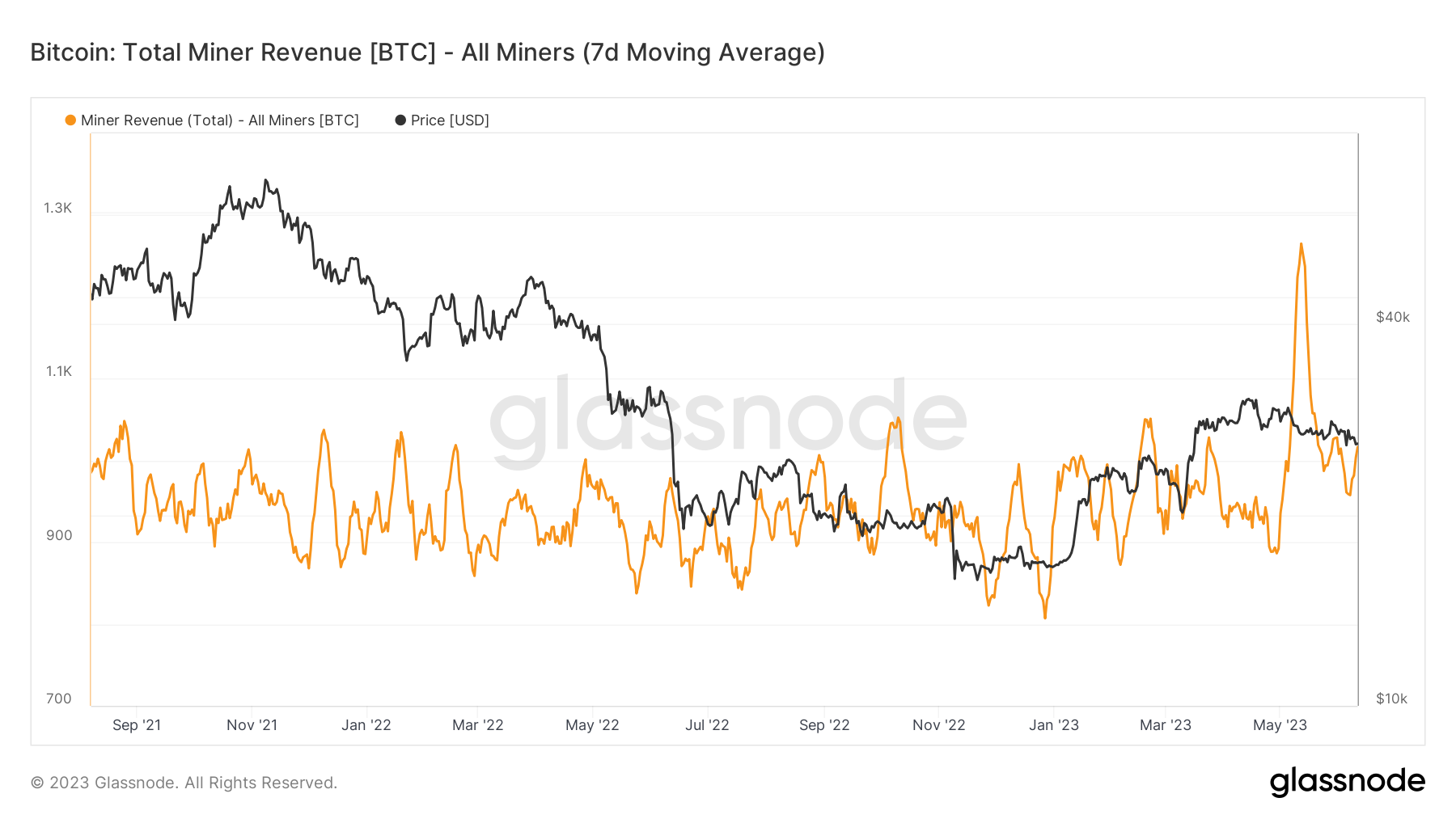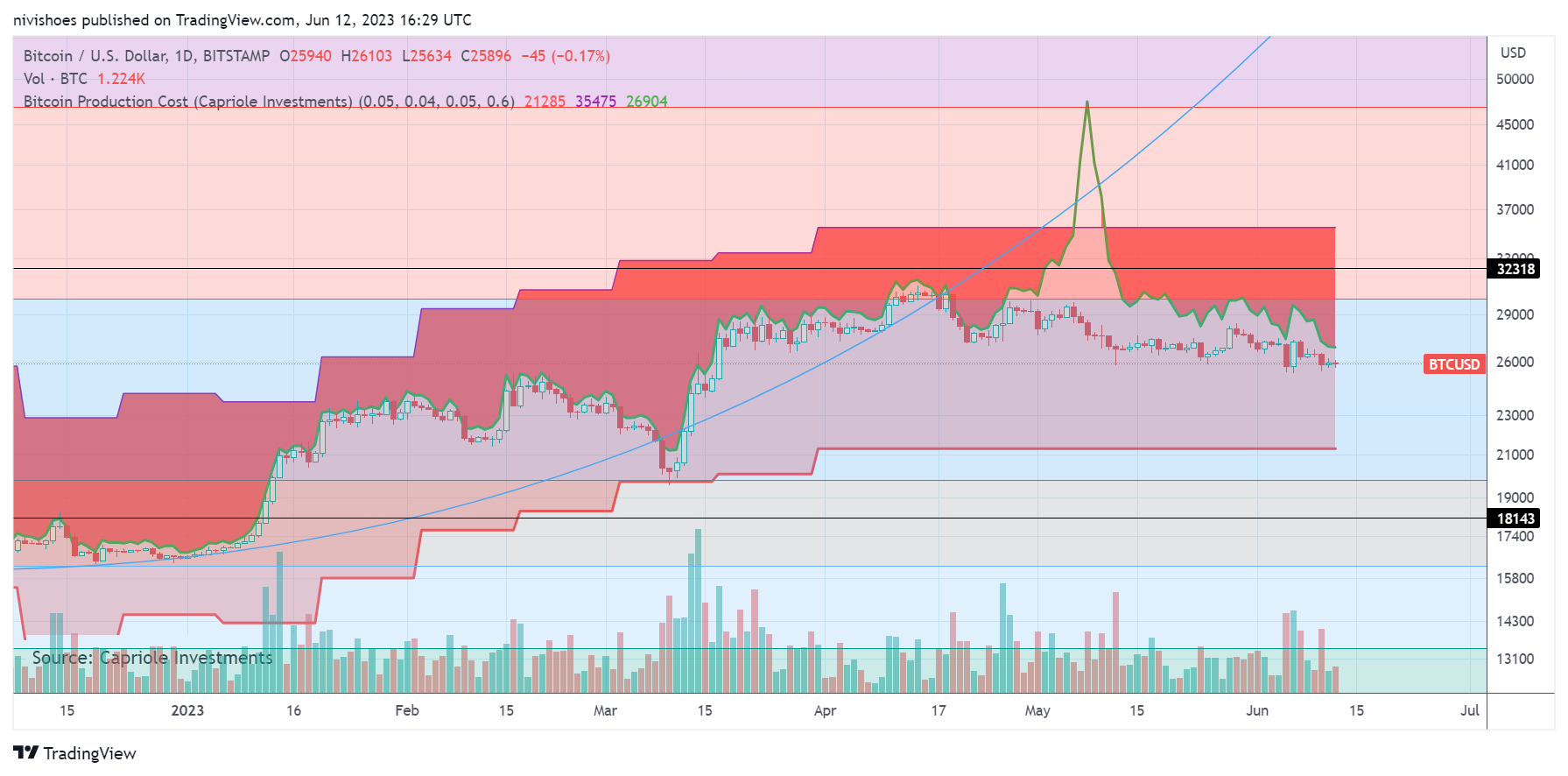Bitcoin’s on-chain data provides evidence that Bitcoin miners are offloading their holdings. The factors influencing the selling pressure could be reduced earnings from a cooldown in Ordinals activity as well as mining difficulty and hash rate reaching an all-time high.
According to on-chain analytics firm Glassnode, “Miners have been sending a significant amount of coins to exchanges.”
Glassnode data shows Bitcoin (BTC) miners’ inflows to exchanges spiked to a three-year high on June 3 to levels last seen during the bull market of early 2021.
Across the past week, #Bitcoin Miners have been sending a significant amount of coins to Exchanges, with the largest inflow equal to $70.8M.
This is the 3rd largest inflow on record, -$30.2M less than the peak inflow of $101M recorded during the primary bull market of 2021. pic.twitter.com/w4fNFMcxr4
— glassnode (@glassnode) June 11, 2023
Coin Metrics data also shows a decline in the one-hop supply metric of miners, which measures the quantity of Bitcoin stored in addresses that receive coins from mining pools.
The metric recorded a consistent uptrend in miner holdings since May 2023; however, the miners reversed their accumulation trend in the second week of June.

Bitcoin mining difficulty, which refers to a measure of how difficult it is to find a new block in the Bitcoin blockchain network, reached an all-time high at the start of June.
Bitcoin difficulty adjusts periodically to ensure that new blocks are added to the blockchain approximately every 10 minutes on average. When the network’s computation capacity increases, it readjusts to make mining more difficult and vice versa.
The difficulty is adjusted every 2,016 blocks, which is roughly every two weeks, and is based on the total computational power, or hash rate, of the network. The last adjustment occurred on May 31, with a 3.39% increase in total difficulty.

Moreover, the competition among miners has increased since the last difficulty adjustment, with the network’s hash rate rising to a new all-time high of 381 exahashes per second on June 11. The next difficulty adjustment due this week will likely add to the selling pressure.
Bitcoin Ordinals activity, which was responsible for an increase in miner revenue, declined in May, leading to reduced earnings for miners. The total fees paid for Ordinal inscriptions on Bitcoin dropped to a two-month low, with trading volumes on nonfungible token marketplaces showing a similar trend.
The seven-day average earnings of miners, according to Glassnode data, dropped from a high of $33.9 million in May to $25.8 million at the start of June.

In 2022, the summer heat waves caused miners in Texas to temporarily shut down operations. Reportedly, Texas accounts for around 15% of the mining capacity in the United States.
The heat waves could worsen in 2023, leading to a downturn in the network’s mining hash rate.
Related: Bitcoin miners have earned $50B from BTC block rewards, fees since 2010
Identifying miners’ stress levels
Currently, the cost of producing Bitcoin for the existing mining hardware lies between $35,532 and $21,244. With Bitcoin’s price holding above $25,000, the downtrend in Bitcoin’s mining hash rate could be limited.
However, if the situation worsens over the summer and the mining cost increases without a proportionate increase in the BTC price, the industry could fall back into capitulation mode, marked by accelerated BTC selling and a reduced network hash rate.

According to an update from Hashrate Index, the “hashprice [PH] is back below $70.00/PH/day for the first time since mid-March” after touching an average of $82.23 per PH per day in May, a 14.8% decline.
It remains to be seen how far the sell-off extends and whether or not Bitcoin Ordinals activity comes back in the meantime.
This article does not contain investment advice or recommendations. Every investment and trading move involves risk, and readers should conduct their own research when making a decision.
This article is for general information purposes and is not intended to be and should not be taken as legal or investment advice. The views, thoughts, and opinions expressed here are the author’s alone and do not necessarily reflect or represent the views and opinions of Cointelegraph.



Leave A Comment